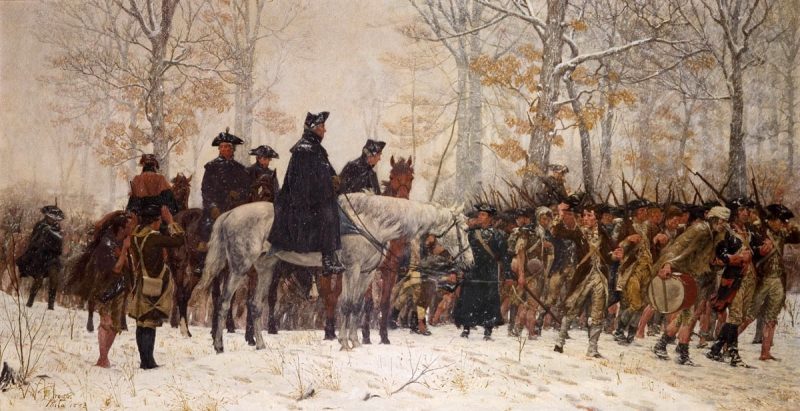The discovery of several commonly used items 15 miles west of Newark Liberty International Airport have started a new debate among the historians of American Revolution. In the United States, the American Revolution is revered and looked upon for inspiration and as a prologue to America’s greatness. The recent discovery has the potential to force the historians to make some changes in the current narrative of the first gathering platform of the continental Army under George Washington.
The items are discovered after a dig-up on an unscathed farmland; and the treasure trove is consisted of several items such as desk drawer, a knob, a shard, pipe bowl and a clay pot. In the outset these items bear no historical connotations; however after the discovery is correlated with other historically documented facts about region’s association with George Washington’s Army, then suddenly it shines like a beacon for archaeologists and historians.
This is how it all begins; the legend has it (in this case the history has it) that up until the winter of 1777 the legendary Continental Army was nothing more than a ragtag group of enthusiasts who wanted to wage a rebellion against the rulers. According to the historian and researcher Wade Catts who is also the director of commonwealth Heritage Group, the encampment of Washington’s Army in the hillside of New Jersey is arguably the most defining moment in the formation of the Continental troops.
During the crucial period of the winter 1777, the seemingly untrained army learnt to survive the elements and slowly disciplined themselves for the monumental and historic challenges ahead. Talking about the apparent neglect of early historians about the encampment, Catts pointed towards the fact that post revolution historians did not want to portray the initial stages of army as undisciplined and ill organized militia; they often focussed on the era after the apparent pre-revolution preparation in the New Jersey countryside.
Most of the historians started the story of the Continental Army from Forge Valley; where George Washington officially commenced the organized revolutionary war against the British. There are not many written records of the nature and shape of Washington’s men available prior to Forge Valley and 1777.
William Styple, who is a published author and editor of many American history books, started the unearthing of his old farm in Chatham in search of some old artefacts that he may stumble upon. He had read an article published in 1855 written by Reverend Samuel Tuttle; in which Tuttle interviews the locals in Chatham who were old enough to have witnessed the Continental camp.
The locals informed Tuttle about the sudden arrival of the troops through the forests and the encampment that followed it. Styple was sure to find a plethora of artefacts at the site and wanted to change the narrative about the origins of America’s most revered soldiers.
Styple’s son Brad Styple shares his father’s passion and enthusiasm towards American history and has worked with his father towards his endeavour into the first camp for Washington’s Army. Brad, a high school junior searched for the clues and came across a set of photographs from 1890’s that depict the mansion which stands on the same place today.
Samuel Tuttle’s article about the eye witness account of the camp mentioned the hardships faced by the troops during the peak winters of 1777. The soldiers, though enthusiastic and willing to die for the cause in the beginning, were not adequately prepared; both mentally and physically for the challenging tasks ahead. A number of young soldiers perished in the cold winter and many faced illnesses and disease, and some even left the camp.
However over time, the soldiers learnt to fight the elements and remained focussed on the target; Washington played a crucial role in keeping the morale of the soldiers to a high level. This training helped shape the discipline of the Continental Army; the trait which not only benefited the cause of American Revolutin, it also enabled the future military formation of the nascent nation.
Lead image source
